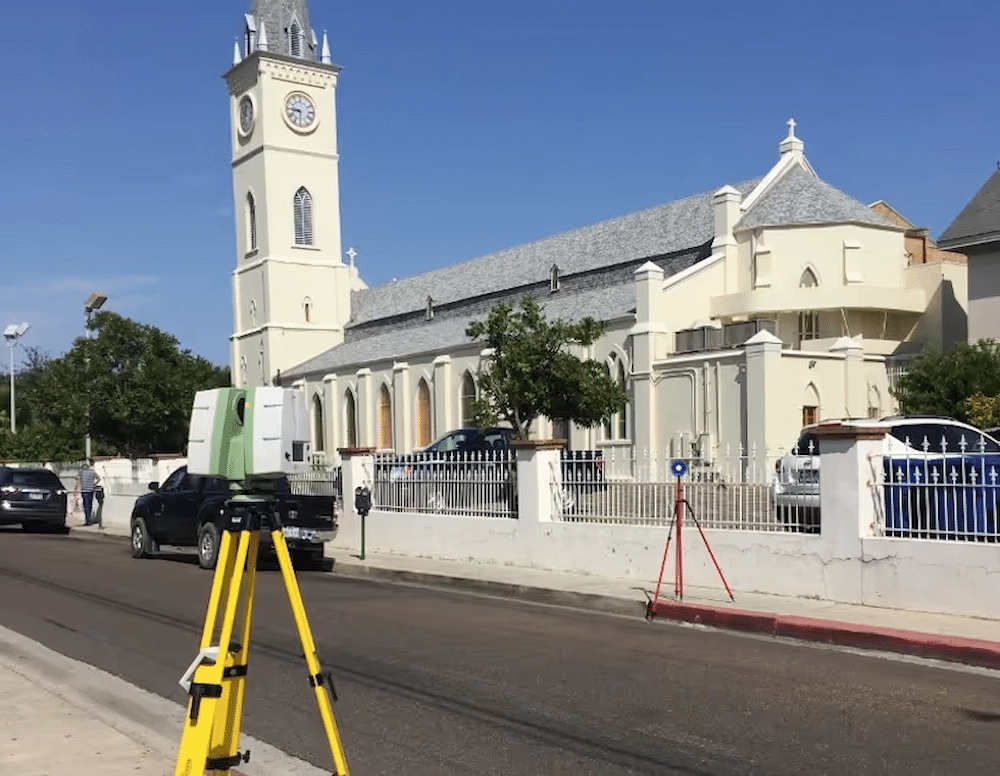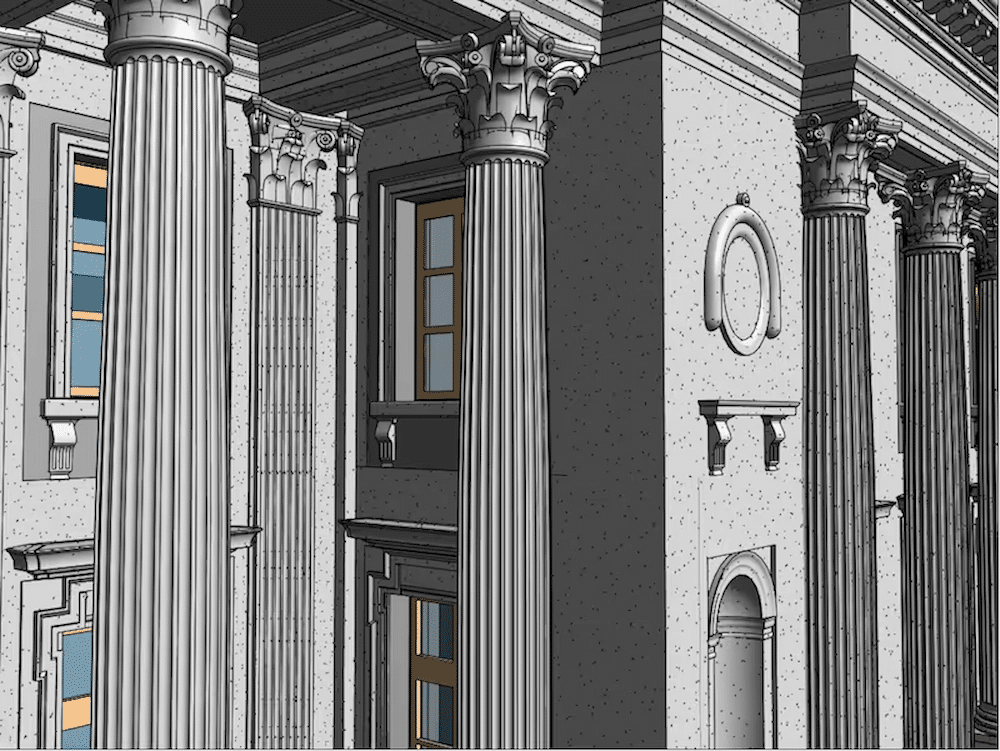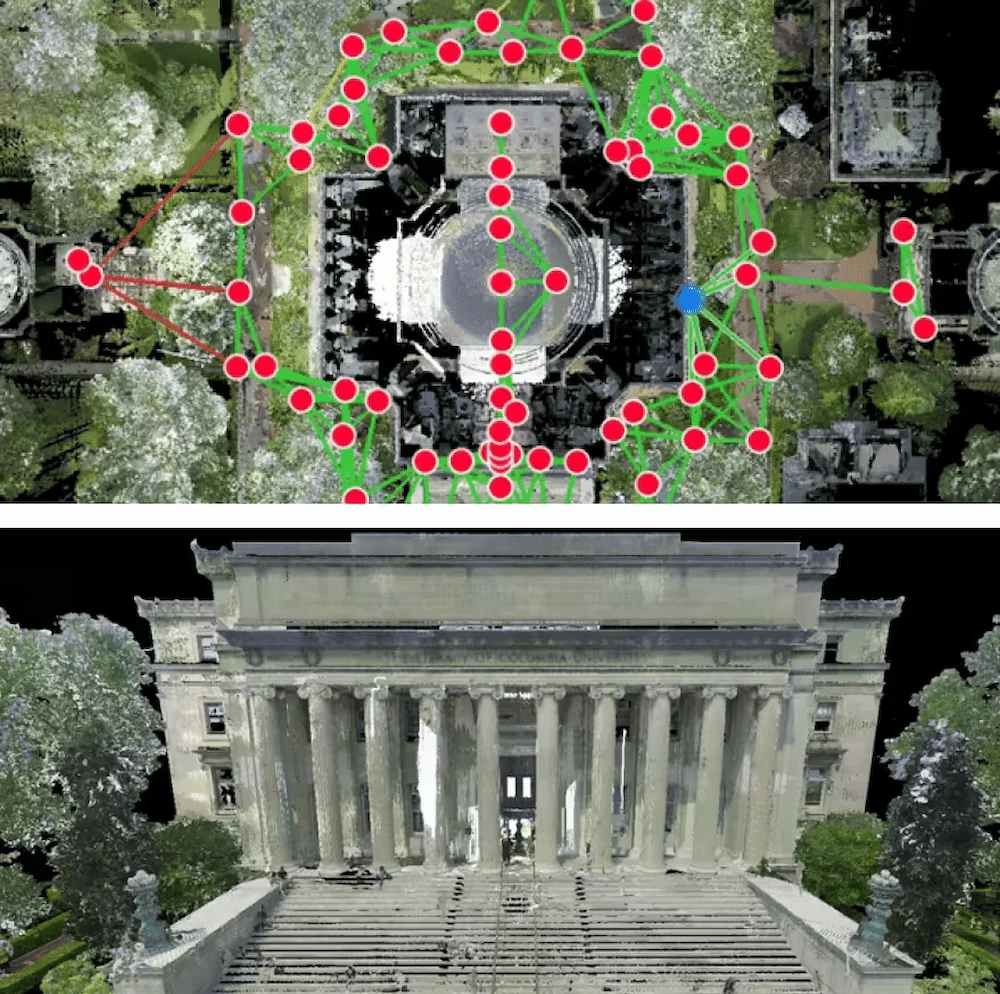Renovating a historical building demands meticulous planning and a robust strategy for managing and sharing project data. Facility managers and contractors must ensure that all stakeholders have access to accurate, up-to-date information throughout the renovation process. Efficient data storage and collaboration platforms, such as SiteMap®, facilitate seamless access to crucial documentation, preventing costly errors and delays.
Leveraging 3D Laser Scanning for Accurate Documentation

3D laser scanning is an essential tool for historical building documentation, delivering precise spatial data of complex details, structural conditions, and intricate ornamental features.
3D laser scanning provides a precise record of historical structures, capturing intricate details and structural conditions without compromising architectural integrity. However, collecting this data is only the first step. Without an effective storage and retrieval system, even the most detailed scans can become underutilized. A centralized, cloud-based platform like SiteMap® ensures that all project members – architects, engineers, and contractors – can access, review, and utilize this data in real time.
Challenges and Solutions in 3D Laser Scanning
Complex Architecture
Historic buildings feature elaborate elements such as vaulted ceilings, domes, and intricate moldings. Capturing these details requires high-resolution scanners and multiple scanning angles. Once acquired, this data should be stored in a structured, accessible format to facilitate precise restorations.
Structural Integrity Issues
Many historic buildings suffer from settling foundations, bowed walls, or weakened materials. Scanning from a safe distance using long-range laser equipment mitigates risks. Storing and labeling scan data by location and condition severity in SiteMap® allows teams to track structural concerns efficiently.
Limited Accessibility
Narrow corridors, concealed passageways, and restricted spaces pose challenges for traditional scanning setups. Portable and handheld scanners provide flexibility, but without a centralized database, integrating these scans into a cohesive model can be challenging. SiteMap® offers an organized repository for consolidated data, ensuring no detail is overlooked.
Fine Artwork and Artifacts
Preserving artwork and delicate artifacts requires non-invasive scanning techniques. The resulting high-resolution scans must be securely stored and easily retrievable for restoration teams. Categorizing these files within SiteMap® enables quick reference and comparison during renovations.
Caption: Historical buildings often feature elaborate architectural details and decorative elements such as ornate moldings, domes, columns, arches, elaborate ceilings, and more.

Historical buildings often feature elaborate architectural details and decorative elements such as ornate moldings, domes, columns, arches, elaborate ceilings, and more.
Poor Lighting Conditions
Dark interiors, basements, and shadowed areas can reduce scan accuracy. Advanced low-light scanners and strategic lighting adjustments improve data quality. Organizing these enhanced scans within a centralized system prevents loss of critical details and ensures consistency in data interpretation.
Time Constraints
Public access and operational schedules can limit scanning opportunities. Efficient scheduling and phased scanning help mitigate disruptions. Ensuring that all captured data is immediately uploaded and categorized in SiteMap® accelerates decision-making and reduces downtime.

Historical buildings are often open to the public, which can disrupt the 3D scanning process.
Regulatory and Legal Compliance
Historic preservation regulations require thorough documentation and adherence to specific standards. A cloud-based system enables easy sharing of compliance documents, permits, and approval records, ensuring seamless coordination with regulatory authorities.
Optimizing Renovation Workflows with SiteMap®
SiteMap® serves as the central hub for all project-related datasets, streamlining how teams access and interact with critical information. Beyond storing point clouds, SiteMap® consolidates CAD files, BIM models, and digital walkthroughs into one platform. This unified access allows every team member – whether in the office or on-site – to make informed decisions using the most current and complete information available. By streamlining access to these varied but interconnected data types, SiteMap® improves project planning accuracy, minimizes miscommunication, and keeps every team member aligned throughout the renovation lifecycle.
SiteMap® serves as a dynamic repository where stakeholders can:
- Access High-Resolution 3D Models: Review detailed scans, compare historical and current conditions, and plan modifications accordingly.
- Track Structural Changes: Overlay past and present scan data to monitor deterioration or restoration progress.
- Coordinate Renovation Plans: Integrate scan data with CAD/BIM software, ensuring alignment with design specifications.
- Facilitate Real-Time Collaboration: Grant controlled access to architects, engineers, and contractors, streamlining decision-making processes.
- Ensure Compliance and Documentation: Maintain a well-organized record of scans, approvals, and compliance requirements for future reference.
Transforming 3D Scan Data into Actionable Restoration Plans

3D laser scanning captures the exact dimensions and geometry of a building, creating a digital, high-resolution point cloud.
3D laser scanning is indispensable for preserving and renovating historical buildings. However, without a structured approach to data storage and access, even the most advanced scans lose their value. Implementing a centralized platform like SiteMap® ensures that all project stakeholders can seamlessly retrieve, analyze, and apply scan data, resulting in efficient project execution and superior restoration outcomes. Facility managers and contractors must prioritize data management to maximize the benefits of 3D laser scanning and uphold the integrity of historical structures.
Click below to schedule your live, personal SiteMap® demo today!
